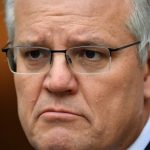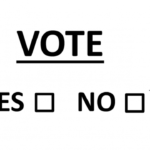
On Nuclear Energy
Australia now can finally have this important debate:
At the tail end of 2016 the former prime minister Bob Hawke said nuclear power “would be a win for the global environment and a win for Australia.” Perhaps now that might become reality. Just recently opposition leader Peter Dutton said that if the Coalition wins the next federal election, they will seek to open seven nuclear power stations in Australia. This is sensible and long overdue, but the lamestream media, Labor, the left, the unions, and the Greens are of course going apoplectic over this.
So what are we to make of all this? First, a few quick facts. There are some 440 nuclear power plants in around 32 nations at the moment, with dozens more being built. America has 94 (in 28 states), while China and France each have around 55, and Russia has 37. Even nations known for their leftist, progressive and ‘green’ leanings have them, such as Sweden with 6 and Finland with 5.
Nuclear energy provides about 10% of the world’s electricity (as of 2022) and is the world’s second largest source of low-carbon power (26% as of 2020). Australia has the most uranium reserves in the world (28%). It is followed by Kazakhstan and Canada. These three nations accounted for more than 50% of total global reserves.
Australia has long exported uranium to other nations, and it generated $812 million in export earnings from it in 2022-23. It is foolish in the extreme that we cannot make use of this cheap, widespread and reliable energy source. Indeed, of the world’s 20 leading economies, Australia is the only one not using nuclear power.
With 60% of Australians supporting nuclear energy, it is time to join much of the rest of the world. One news report says that Dutton’s plan (just announced days ago) would involve this:
-The first of two small modular reactors (SMR) would be operational by 2035. Conventional facilities would be operational by 2037 “if modern larger plants are found to be the best option”.
-The large-scale plants – which would have a capacity of between 1 gigawatt and 1.4 gigawatts – would be built on the site of old coal-fired power stations, taking advantage of existing energy infrastructure.
-The government will own and run the sites, likening the plan to Snowy Hydro Limited and NBN Co. https://www.afr.com/politics/federal/dutton-s-nuclear-power-plan-explained-in-brief-20240619-p5jn6d
See this short video by Dutton on why we need to add nuclear to the mix of our energy future: https://www.tiktok.com/@liberalaus/video/7382115146690268424?_r=1&_t=8nLJUcnF8nw
Like most of my readers, I am not a scientist with full-on expertise in all things nuclear. But I can rely on others who are. Given the near blanket leftist monopoly of opinion on this issue, one needs to dig a bit further. But plenty of experts, groups, websites and books can be appealed to here. Let me just quote from a few of them.
Back in 2010 environmental scientist Barry Brook of the University of Adelaide Environmental Institute offered seven reasons to say “yes” to nuclear power:
- Because renewable energy & energy efficiency won’t solve the energy & climate crises
- Because nuclear fuel is virtually unlimited & packs a huge energy punch
- Because new technology solves the “nuclear waste” problem
- Because nuclear power is the safest energy option
- Because advanced nuclear power will strengthen global security
- Because nuclear power’s true costs are lower than either fossil fuels or renewables
- Because nuclear power can lead the “clean energy” revolution
These and other issues all need to be looked at in some detail. For example, we could spend some time simply looking at the double standards and hypocrisy of many of our political leaders. Nuclear medicine of course exists here and overseas, and few if any leaders are saying we should not make use of it. And Prime Minister Albanese has thrown his weight behind nuclear-powered submarines for Australia. But he and Labor are dead set against nuclear energy.
With so much that does need to be discussed, this will have to be the first of a number of articles on the subject. So here I will briefly explore just one area – that of safety. Already we see Labor and the Greens foaming at the mouth, bombarding us with ludicrous and relentless scaremongering, including three-eyed cartoon characters and the like flooding platforms. Yet at the same time Labor is also trying to push through misinformation and disinformation laws!
Safety concerns
Nuclear power has been used since the late 1950s, and overwhelmingly it has been safe, reliable and effective. While whole articles – indeed, entire books – can be written about this, let me just quickly mention three well-known problems that have emerged in all this time: the Chernobyl, Russia incident (1986); the 1979 US Three Mile Island leak; and the Fukushima episode of 2011.
The first was mainly due to old and ineffective technology, while the last one had to do with an earthquake and tsunami. All up some 60 people died in the first incident – none directly in the other two. Such loss of life is always regrettable. But as has been pointed out, just one large airplane crash can take five times as many lives, yet we have not banned all airplane travel, claiming it is just too risky.


If Australia goes ahead with nuclear power, it will be using the newest and most advanced technologies, and the country is relatively free of major earthquakes and tsunamis. In their just-released volume on nuclear power, Conley and Maloney begin by pointing out some surprising and inconvenient truths about safety concerns, especially by way of comparison. Here are a few of them:
-More people die each year working on wind turbines and rooftop solar than have ever died from American nuclear power.
-The average dose received by anyone downwind from Three Mile Island was equal to one chest X-ray.
-If no one had evacuated Fukushima, the maximum downwind dose would have been equal to one CT scan.
-The false estimate of 4,000 future deaths from Chernobyl was based on a 1927 experiment, conducted before low levels of radiation could even be accurately measured and delivered.
-Since 1970, commercial airline crashes have caused over 80,000 deaths. Yet global air traffic has increased year after year….
All this is carefully documented and referenced in great detail in this important volume. Later in the book they say this:
Your lifetime risk of dying in a plane crash is one in eleven million. That means there is risk involved; it does not mean that flying is unsafe. This same distinction is fundamental to our understanding of nuclear power. With any type of energy system, as with anything else in life, risk comes with the territory. The ability to keep risk in perspective is what got us out of the cave and into our cars….
If there was no safe dose of radiation, nuclear medicine and radiology would not be possible, and we naked apes would routinely die of sunburn (the high-frequency UV portions of sunshine are ionizing). Granite would be categorized as a hazardous substance, and we would have to evacuate Denver in the halls of Congress. Bananas, avocados and Brazil nuts would be banned along with smoke alarms, X-rays, and CT scans – especially CT scans. They can be up to 30 mSv apiece!
Science and objective reality, along with the library of statistics, tell us that radiation concerns should be framed in terms of acceptable risk rather than absolute safety….
As they summarise: “Simply put: nuclear is the safest form of mass energy production available, with the lowest death print of any energy technology, and one of the lowest life-cycle CO2 emissions of any form of energy generation.”
References and suggested reading
At least two of the twelve authors featured here are Christians (Dutch and Hore-Lacy), and three are Australians (Brook, Lowe, and Hore-Lacy). And lest it be thought that these are not objective and reliable authors, most have scientific backgrounds, and a number are actually committed environmentalists. They are convinced that if we want to do best by the planet, we should reject the hysteria and hyperventilating about nuclear power, and examine it in terms of facts, data and evidence.
Beckman, Petr, The Health Hazards of Not Going Nuclear. Golem Press, 1976.
Cohen, Bernard, Before It’s Too Late: A Scientist’s Case for Nuclear Energy. Plenum Press, 1983.
Conley, Mike and Tim Maloney, Earth is a Nuclear Planet: How Bad Science Demonized Our Best Clean Energy Source. Open Universe, 2024.
Craven, Gyneth, Power to Save the World: The Truth About Nuclear Energy. Vintage, 2008.
Dutch, Robert, Let There Be Light! Nuclear Energy: A Christian Case. Wipf & Stock, 2017.
Goldstein, Joshua and Staffan Qvist, A Bright Future: How Some Countries Have Solved Climate Change and the Rest Can Follow. PublicAffairs, 2021.
Hore-Lacy, Ian, Nuclear Energy in the 21st Century, 4th rev. ed. World Nuclear Association, 2018.
Hoyle, Fred, Energy or Extinction? The Case for Nuclear Energy. Routledge,1977, 2023.
McCracken, Samuel, The War Against the Atom. Basic Books, 1982.
Zubrin Robert, The Case for Nukes: How We Can Beat Global Warming and Create a Free, Open, and Magnificent Future. Polaris Books, 2023.
Pro and con:
Brook, Barry and Ian Lowe, Why vs Why: Nuclear Energy. Pantera Press, 2010.
With energy prices skyrocketing, and more fears of blackouts and power failures, we need to see the foolish bans on nuclear energy lifted. It should be part of our overall energy mix – not the sole component, but one important component. As mentioned, much more needs to be said on this topic, so stay tuned for further articles to appear in the days ahead.
[1597 words]




















Considering how ill-researched inoculations were pushed on us because of the Covid ’emergency’, it is extremely odd that in a supposed climate emergency there is no push for nuclear energy. There is a strong smell of rat.
Thanks John.
Hello Bill, thank you for writing this article. Before he passed away, my husband was a nuclear physicist, and had spent over 30 years in the nuclear industry, 10 of those working for the Hinkley Point reactor in the UK. He specialised in the area of safety, and would have had much to comment about your facts and figures, which, from my unknowledgeable perspective, seemed to mostly align with his thoughts. We also lived here in Sydney, in close proximity to the ANSTO research reactor, where he also had worked for over 20 years. In speaking to family and friends, the most common objection raised against anything nuclear, was the safety concern, especially when living in the suburbs surrounding. My husband was of the opinion that the greatest threat to safety was human error. In the behind- the- scenes scenarios he had witnessed, it was always a failure of human judgement which caused problems, be they relating to safety or some other issue. As you point out, this problem is not exclusive to nuclear, but, because of our fallen nature, can happen in all areas of life. He would have been so excited to have finally witnessed this decision of nuclear energy being introduced in Australia.
Many thanks indeed Lucy.
The best man & very good friend of my dad (who turns 100 years old next year) was chief engineer building the Nuclear facility in NSW several decades ago & then was employed all over the world making Nuclear facilities – during that time, Australia was seen as a leader in Nuclear energy facility building!
Thanks Barbara.
My understanding is that solar panels and Lithium batteries are not economic to recycle and the major parts of wind turbines simply are not recyclable. If these things cannot be recycled then calling these energy sources “renewable” is simply an out and out lie. Sooner or later people will inevitably wake up to this.
Additionally we know the major requirement for energy is NOT households but is industry and transport. It is simply make-believe to only be considering household energy use when evaluating these matters.
I’m all in favour of less pollution but the absurdities being currently pushed should be obvious.
I also doubt people will want our nation criss-crossed with power lines to facilitate supposed “renewables”.
It is also not hard to see through the “free energy” lie when nations such as the US and Finland, which use nuclear energy, have electricity prices very significantly less than ours.
Australians really do need to stop being so naive.
Yes quite right Michael.
Great info here Bill, will use some of it in my Letter to the Editor, to counter the Labour ‘misinformation’ that is being used to ridicule Nuclear Power. If more people speak up about the true facts of Nuclear, the more Australians who will become informed and not just accept the false narrative from the Leftists.
Thanks Fred.
I’m a creationist.
Did God give us uranium for a reason? same goes for coal, oil and gas.
If your a die hard atheist it’s just good luck this stuff is around for the benefit of mankind.
Sure we can make bombs and kill thousands of people but like all things each can be used for harm or good. I have to laugh when I keep hearing we need to store radioactive waste for the next million years!
God is sovereign and the second coming will have come and gone before we need to worry about mountains of hazardous waste.
Thanks Dallas.
I know very little on this issue except it would seem to solve a lot of these global warmist concerns. My main concern would be if they were attacked in a time of war and the effect it may have. It would be interesting to know especially knowing what man has been capable of throughout history.
Sorry Bill; but I haven’t read your article on Nuclear Power yet: but I’m for it. I heard the other day that Bob Hawke was for Nuclear Energy; so why is Labor against it? I’m NOT Labor: but Liberal Party & they’re for it; tho’ I don’t agree with some of their ideas!